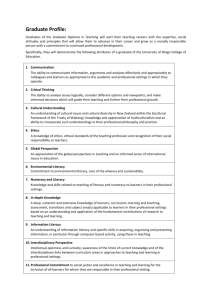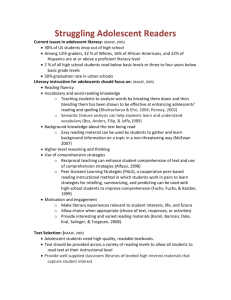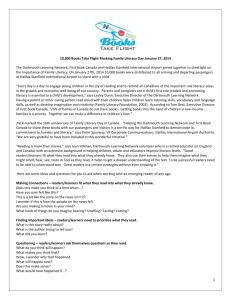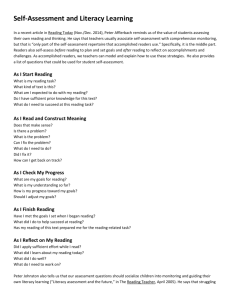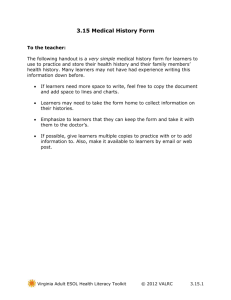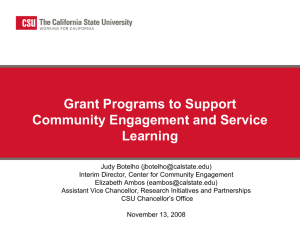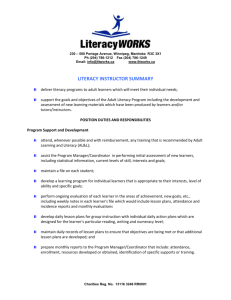Rationale for Use of Picture Books with Older Learners
advertisement
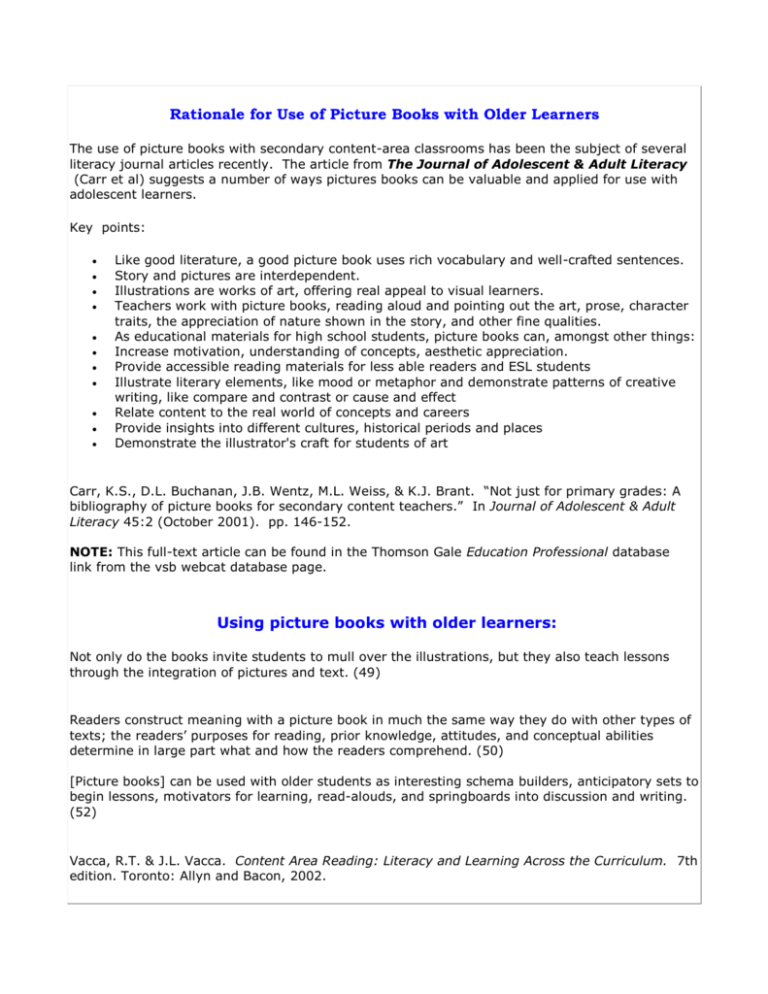
Rationale for Use of Picture Books with Older Learners The use of picture books with secondary content-area classrooms has been the subject of several literacy journal articles recently. The article from The Journal of Adolescent & Adult Literacy (Carr et al) suggests a number of ways pictures books can be valuable and applied for use with adolescent learners. Key points: Like good literature, a good picture book uses rich vocabulary and well-crafted sentences. Story and pictures are interdependent. Illustrations are works of art, offering real appeal to visual learners. Teachers work with picture books, reading aloud and pointing out the art, prose, character traits, the appreciation of nature shown in the story, and other fine qualities. As educational materials for high school students, picture books can, amongst other things: Increase motivation, understanding of concepts, aesthetic appreciation. Provide accessible reading materials for less able readers and ESL students Illustrate literary elements, like mood or metaphor and demonstrate patterns of creative writing, like compare and contrast or cause and effect Relate content to the real world of concepts and careers Provide insights into different cultures, historical periods and places Demonstrate the illustrator's craft for students of art Carr, K.S., D.L. Buchanan, J.B. Wentz, M.L. Weiss, & K.J. Brant. “Not just for primary grades: A bibliography of picture books for secondary content teachers.” In Journal of Adolescent & Adult Literacy 45:2 (October 2001). pp. 146-152. NOTE: This full-text article can be found in the Thomson Gale Education Professional database link from the vsb webcat database page. Using picture books with older learners: Not only do the books invite students to mull over the illustrations, but they also teach lessons through the integration of pictures and text. (49) Readers construct meaning with a picture book in much the same way they do with other types of texts; the readers’ purposes for reading, prior knowledge, attitudes, and conceptual abilities determine in large part what and how the readers comprehend. (50) [Picture books] can be used with older students as interesting schema builders, anticipatory sets to begin lessons, motivators for learning, read-alouds, and springboards into discussion and writing. (52) Vacca, R.T. & J.L. Vacca. Content Area Reading: Literacy and Learning Across the Curriculum. 7th edition. Toronto: Allyn and Bacon, 2002.

